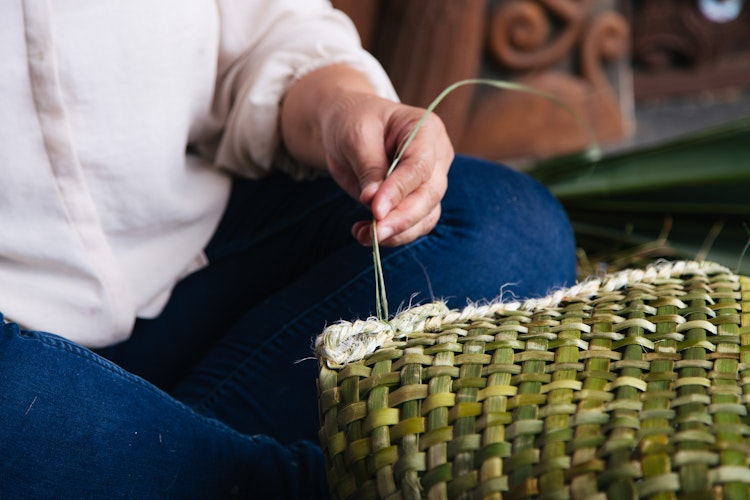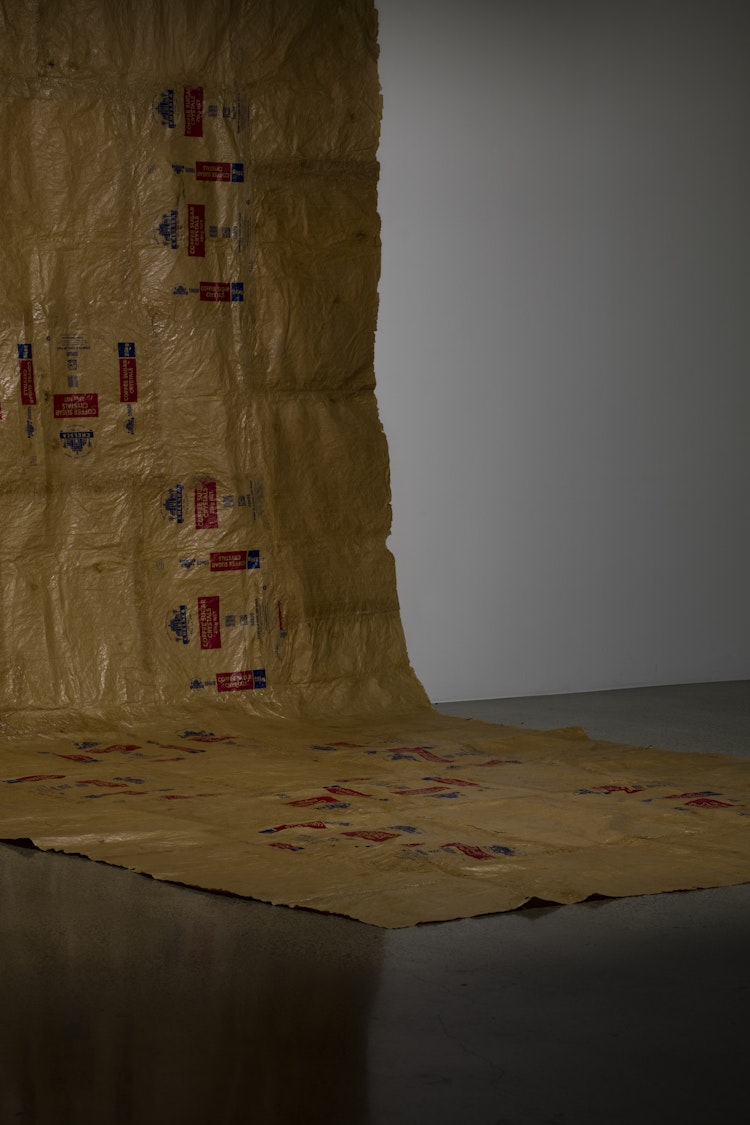

It’s with great pleasure that we publish the third issue of The Vessel titled Embodied Knowledge. The issue is part of a long-standing collaboration between Norwegian Crafts and the Tāmaki Makaurau Auckland gallery Objectspace. The launch of this issue coincides with the opening of La Biennale di Venezia 2022 and the historic Sámi Pavilion and Aotearoa New Zealand Pavilion. In this edition of the biennale, we see a celebration of Indigenous making practices across many pavilions. The three editors of this issue of The Vessel have a similar focus, looking at craft practices and artists from Saepmie and across Te Moana nui a Kiwa, the Pacific Ocean. More specifically they highlight making as a joyful practice, and craft as a powerful source of healing and happiness.

For this issue of The Vessel, editors Jasmine Te Hira, Zoe Black and Carola Grahn explore ideas of whakapapa and maadtoe jah maahtoe within different material customs, describing the connections between Indigenious knowledge systems from Saepmie and across Te Moana nui a Kiwa, the Pacific Ocean. Through the work of jewellers, weavers, fibre artists, artists and duojárat from Saepmie and Aotearoa New Zealand, this issue describes whakapapa and maadtoe jah maahtoe as important value systems and energies that draw together and bind Indigenous creative practice.

Dehtie Maadtoste, Maadtome – From This Land, These Ancestors of Mine
In this essay South Saami/ Scottish Gael Indigenous scholar, language rights activist and teacher Johan Sandberg McGuinne talks about the relationship between maadtoe, land, ancestry, family and heritage, and laahkoe, an extensive set of South Saami honorifics and kinship terms, and how their relationship affects naming practices, pattern making and craft within a South Saami context.


The Sami gietkka, a cradle for newborn children, has an ingenious design. In this text duojárat and couple Fredrik Prost and Inga-Wiktoria Påve talk about two old cradles that were left in their care, and how they made them fit for new generations with the help of each other, their ancestors, and sketches from the 1930s.


Re-routing Whakapapa: Jasmine Togo-Brisby and Making New Material Histories
Jasmine Togo-Brisby’s practice explores how her South-Sea Islander whakapapa can define new material customs, calling on making practices that honour her ancestry while acknowledging the histories of plantation colonisation and forced migration across the Pacific.
Whakapapa is a Māori framework that places us within the world. It encompasses all relationships we experience and guides our knowledge and connection to whānau (family), hītori (history), tikanga (customs) and philosophies. In this presentation by artist Dorothy Waetford we are introduced to the whakapapa of her practice and how it is informed by her background as a dancer, and her local surroundings and whānau (family).

Whakapapa is a Māori framework that places us within the world. It encompasses all relationships we experience and guides our knowledge and connection to whānau (family), hītori (history), tikanga (customs) and philosophies. In this presentation by Raukura Turei we are introduced to the whakapapa of her practice, and how the materials she uses in her work connects her both to her tīpuna (ancestors) and the whenua (land).



Love as a Rebellious Act
Sarah Hudson (Ngāti Awa, Ngāi Tūhoe and Ngāti Pūkeko) has been an admirer of textile artist Ron Te Kawa’s practice and champions his unique approach to sharing Indigenous narratives and stories from te ao Māori (the Māori world) through toi tuitui (art making using sewing and fabric). In this essay, Sarah Hudson explores Ron’s practice through the celebration of play and aroha (love), resilience and punk energy, and loud and rebellious joy.

Texture of Practice: Areta Wilkinson
Whakapapa is a Māori framework that places us within the world. It encompasses all relationships we experience and guides our knowledge and connection to whānau (family), hītori (history), tikanga (customs) and philosophies. In this presentation by artist and jeweller Areta Wilkinson we are introduced to her practice and how reconnecting with her ancestral kāinga (home) has meant connections to deeper material knowledge and understanding.

Reconstructing Gábde Based on Racial Biology Archives
In 2022, it was one hundred years ago that the Swedish State Institute of Racial Biology was established in Uppsala, Sweden. Many ethnic groups and other socially vulnerable subgroups were measured, tested, and photographed in the name of racial biology. The Sami were one of them. In this article, the duodjár and textile artist Katarina Spik Skum describes how she came to use the photographic archive of the Institute of Racial Biology as a source of inspiration for the creation of gábde within the Lule Sami area.